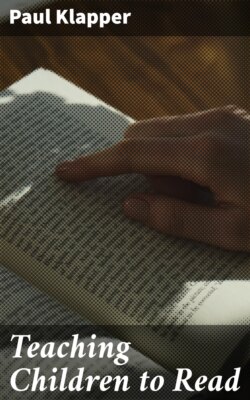Читать книгу Teaching Children to Read - Paul Klapper - Страница 10
На сайте Литреса книга снята с продажи.
SUGGESTED READING
ОглавлениеBalliet, Thomas M. Association of Ideas in Reading. National Education Association, 1893.
Dearborn, W. F. Psychology of Reading. Columbia University Contributions to Philosophy and Psychology, V, XIV, No. 1.
Huey, E. B. Psychology and Pedagogy of Reading, chaps. IV, V, VI, VII, VIII.
Laing, Mary E. Reading; A Manual for Teachers, chaps. X, XI, XIX, XX.
Taylor, J. S. Principles and Methods of Teaching Reading, chaps. I, III.
O’Shea, M. V. Linguistic Development, pp. 163-230. The Macmillan Co.
[2] Huey. “Psychology and Pedagogy of Reading.”
[3] Quantz. Psychological Review, ii, 28, 38. The degree in which the rapid readers excel the slow in eyemindedness can perhaps best be understood by a comparison of extreme classes. The “very slow readers” (3.9 words per second) reproduce 89.1 per cent. as much of the visual selection as the auditory, while the very “rapid readers” (7.3 words per second) are able to recall 123.2 of visual for every 100 of auditory; that is, the ratio of reading rates between the slowest and the fastest readers is 3.9 to 7.3 (1:1.87), while the ratio of visual tendency as compared with the auditory is 89.1 to 123.2 (1:1.38). On the principle of correlations this result shows eyemindedness to be a rather strong factor in the determination of reading rates.
[4] Quantz. Ibid.
[5] Spencer. Philosophy of Style.
